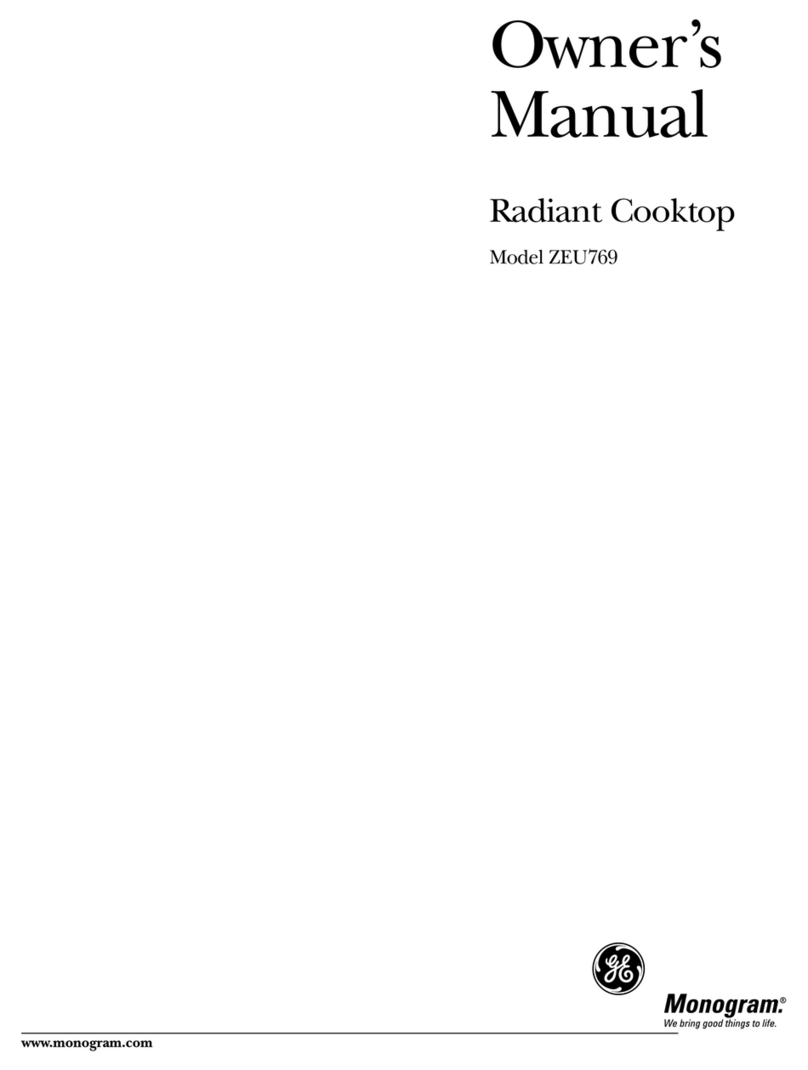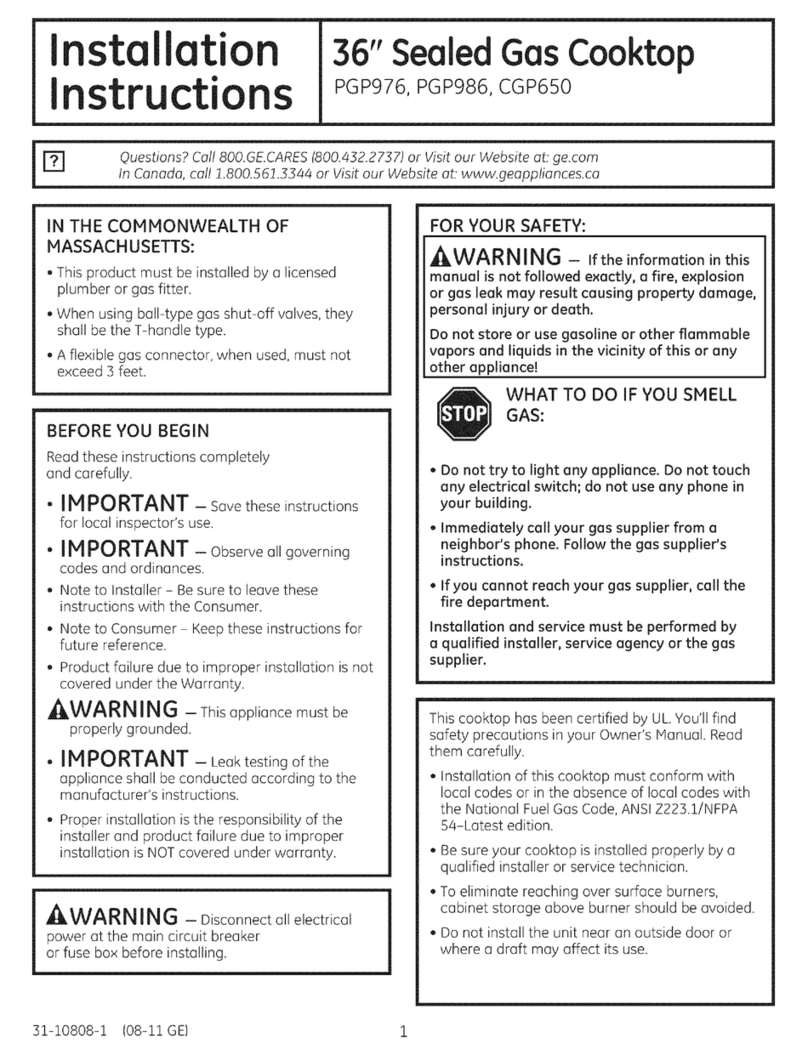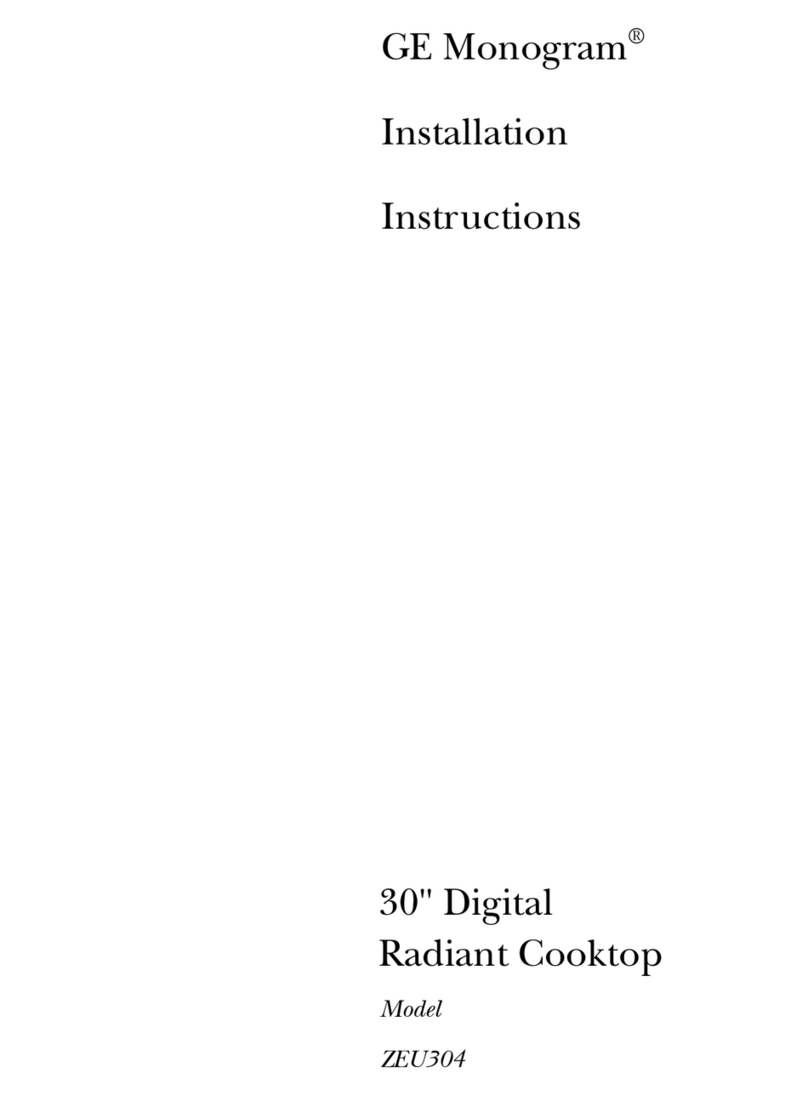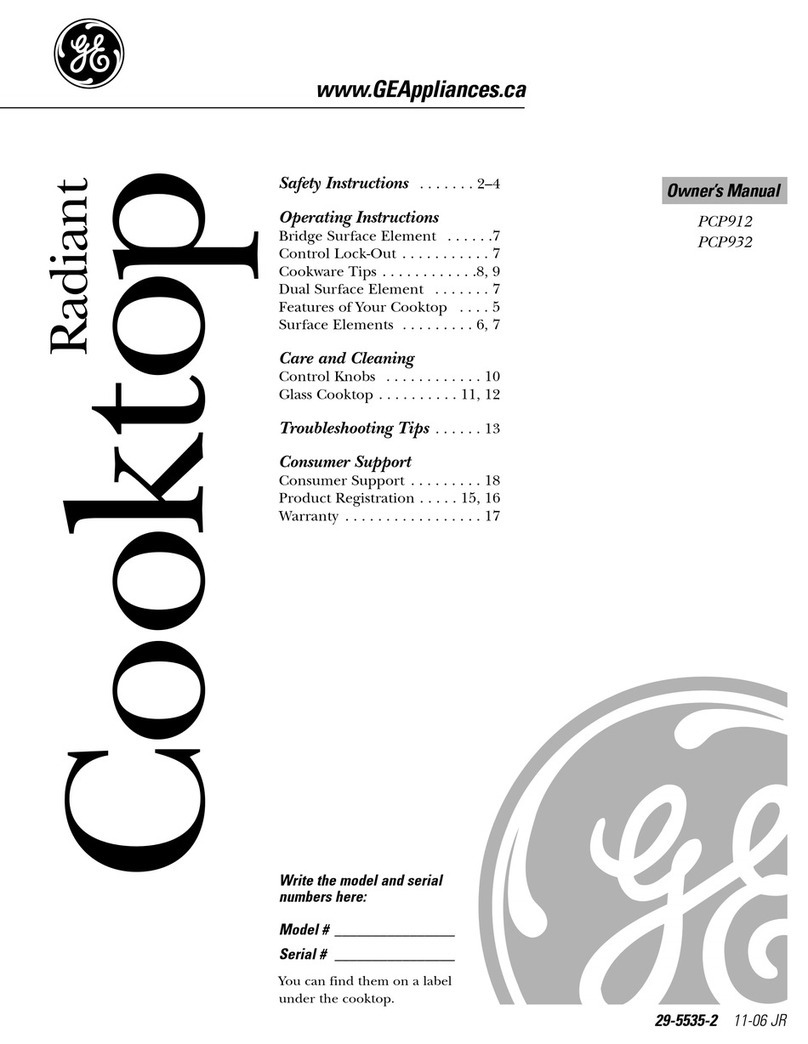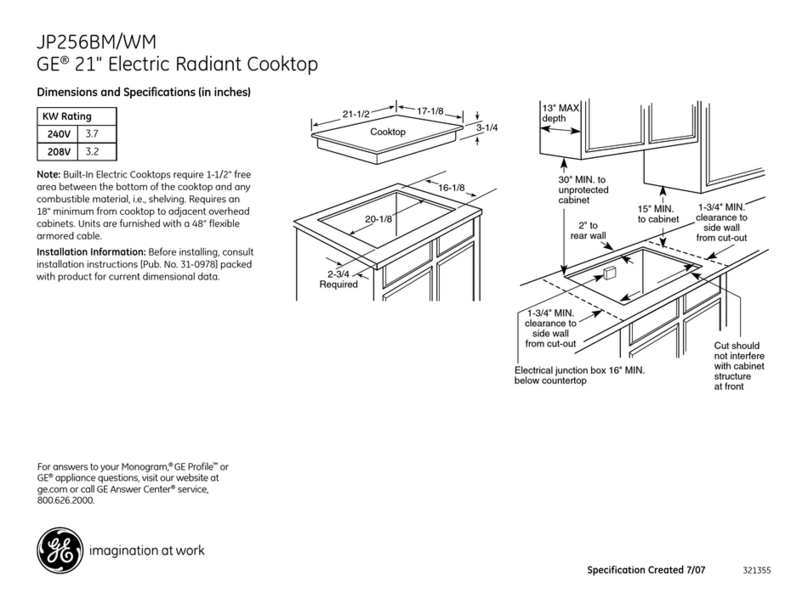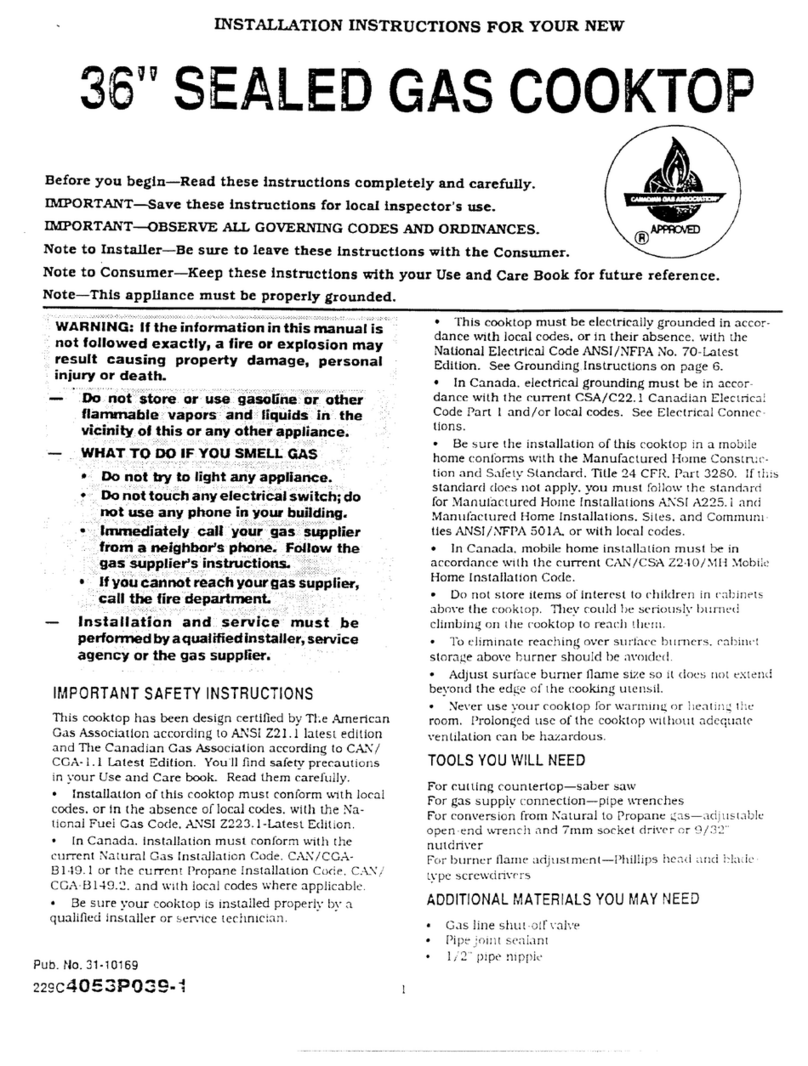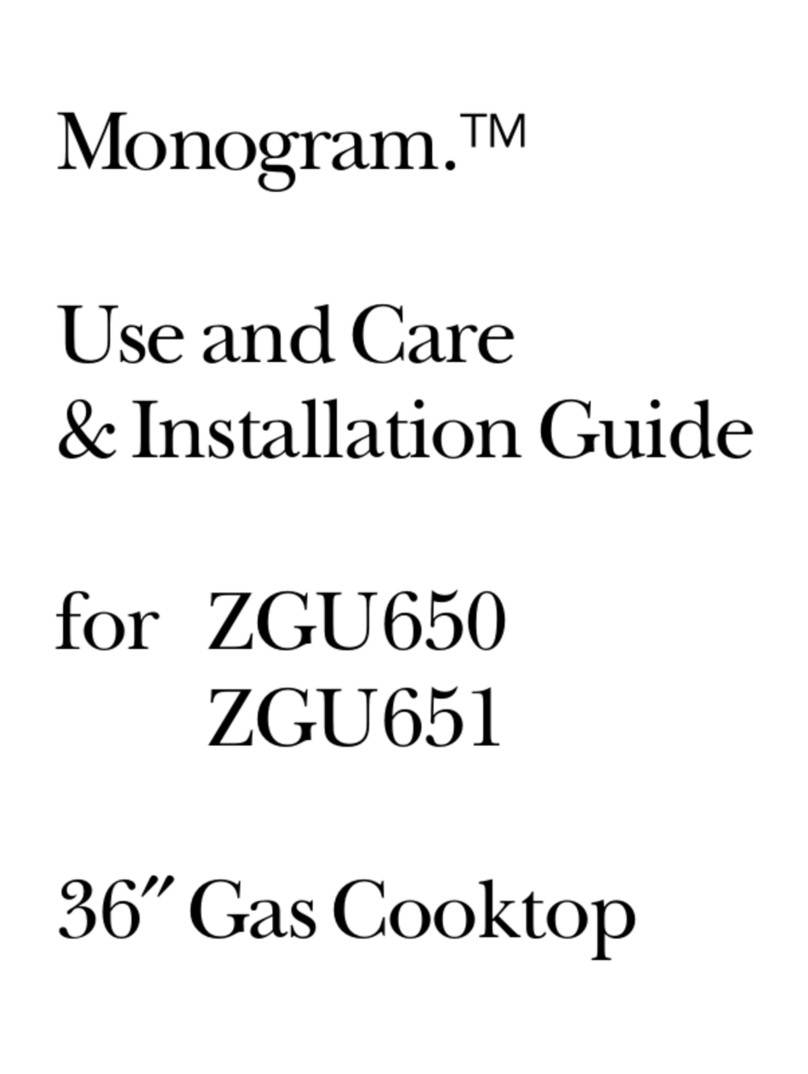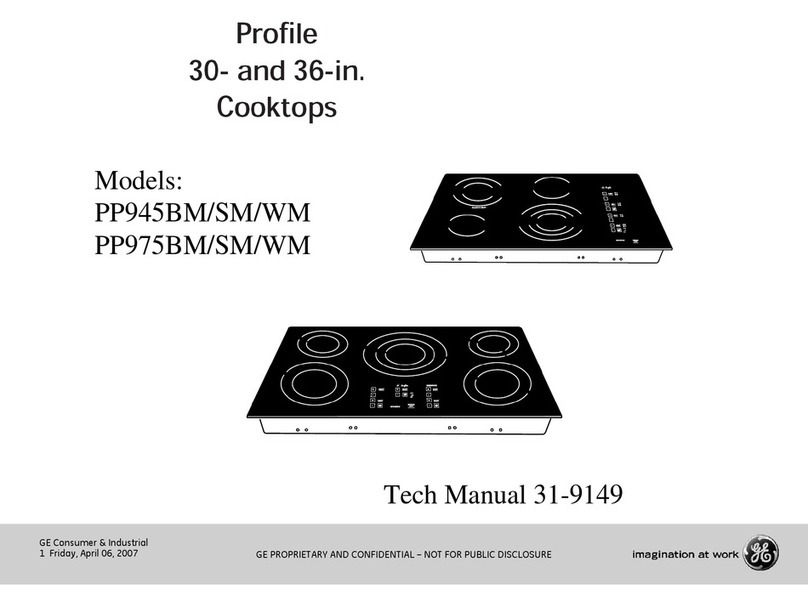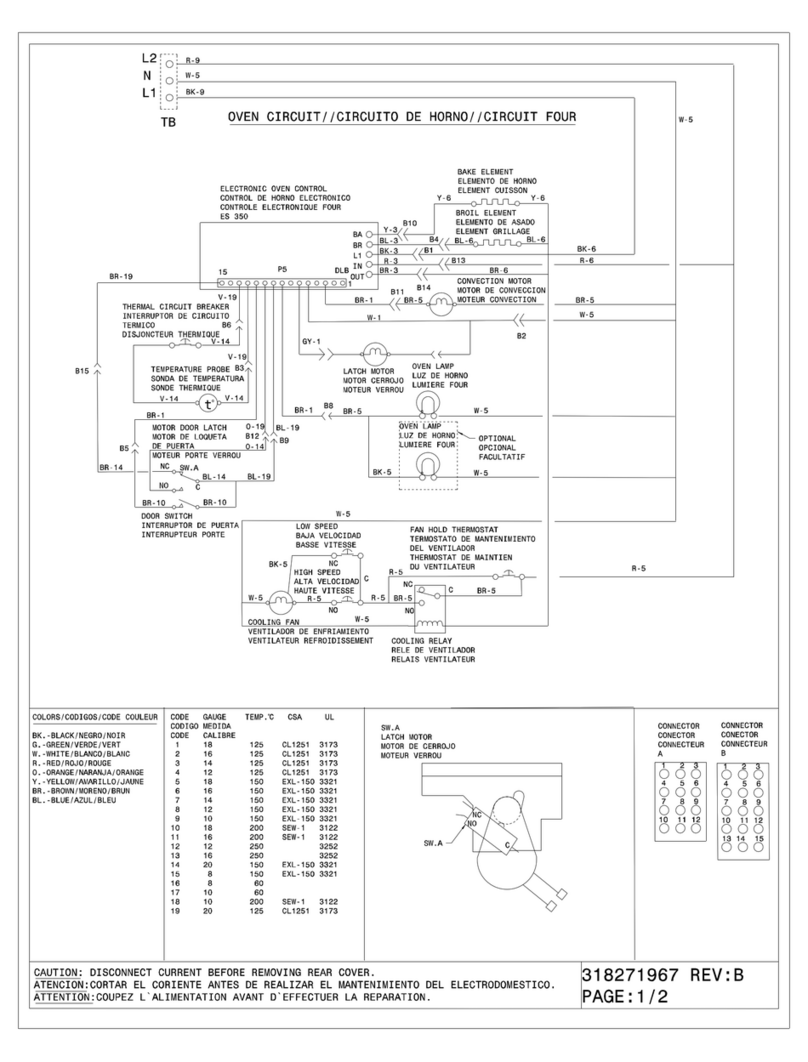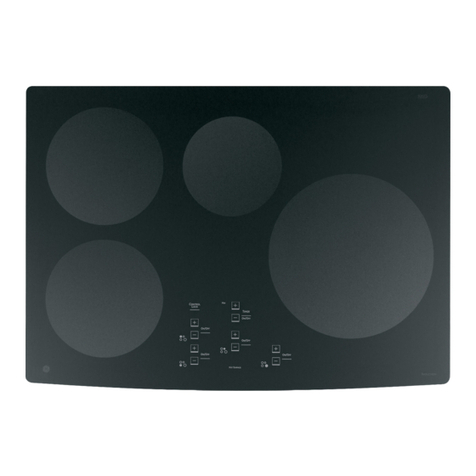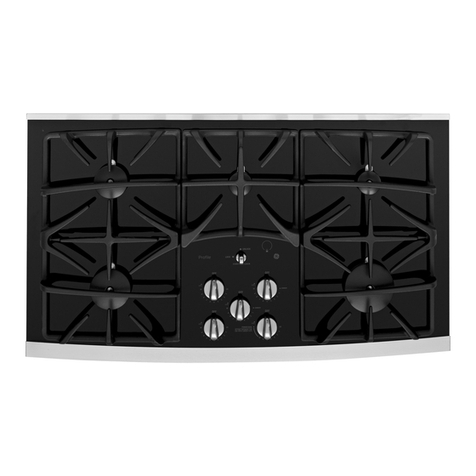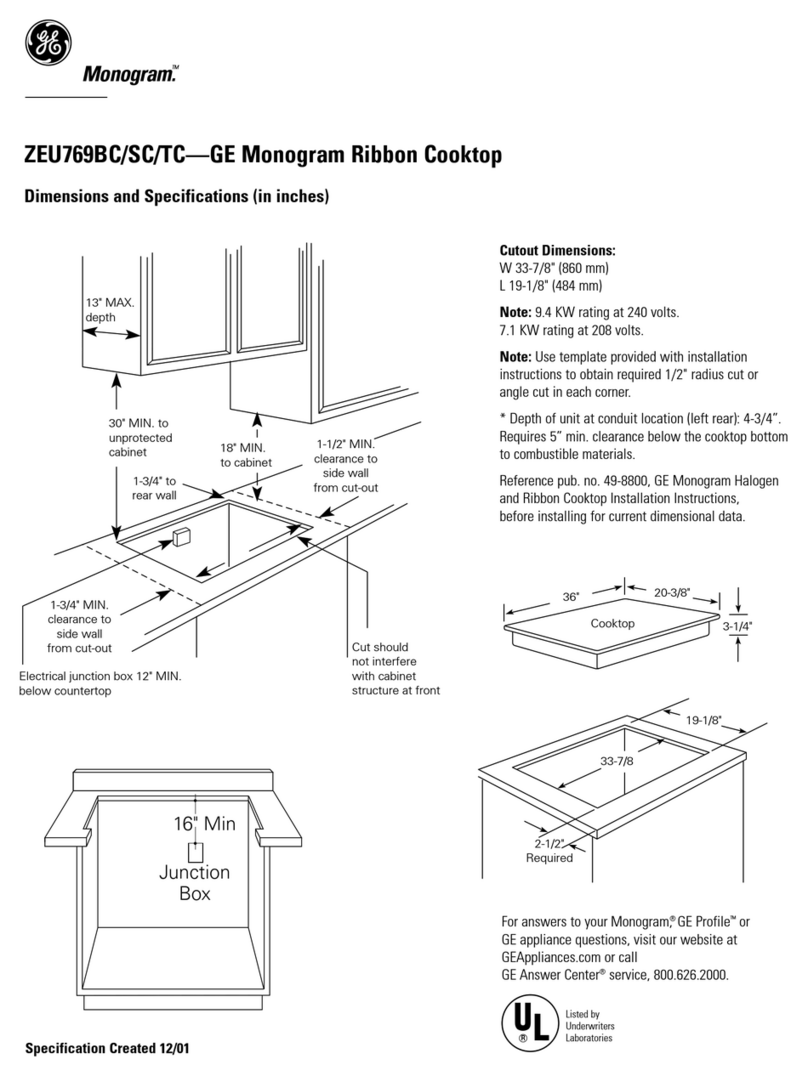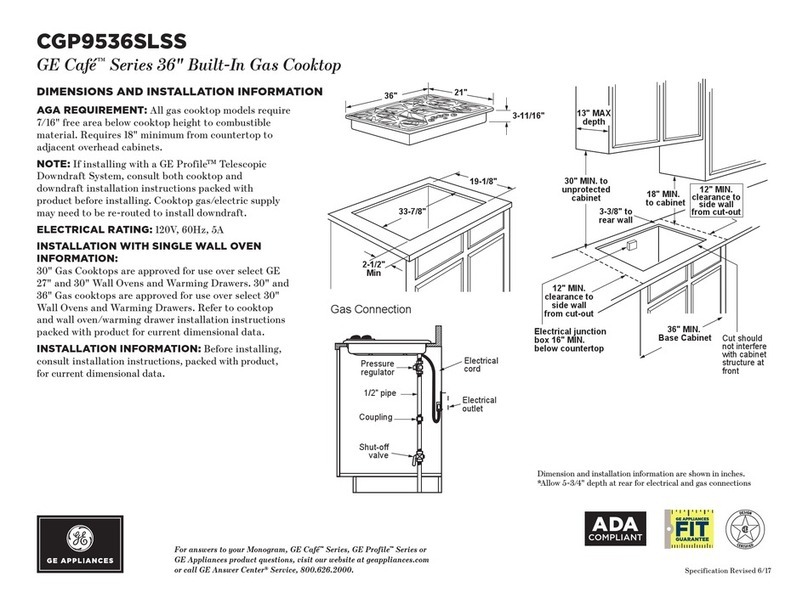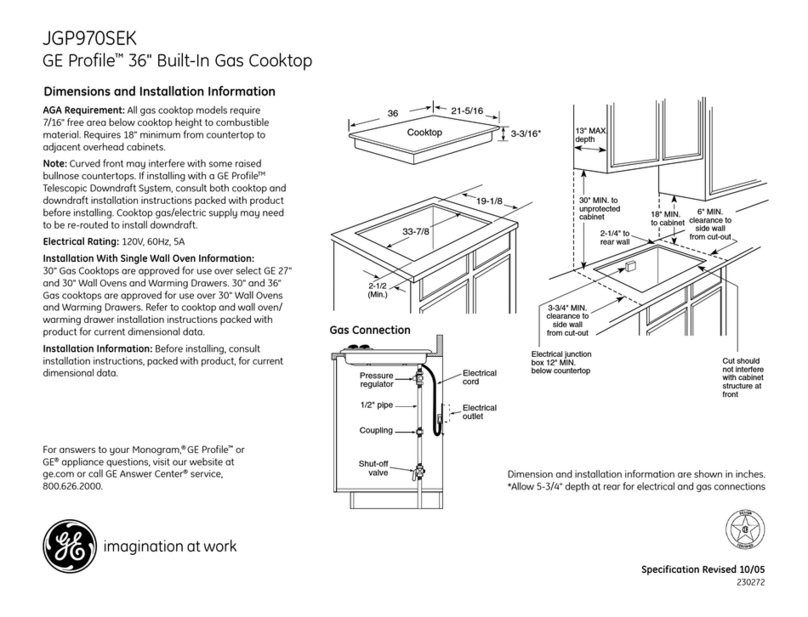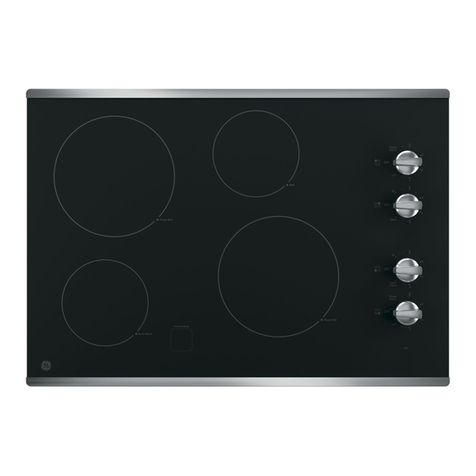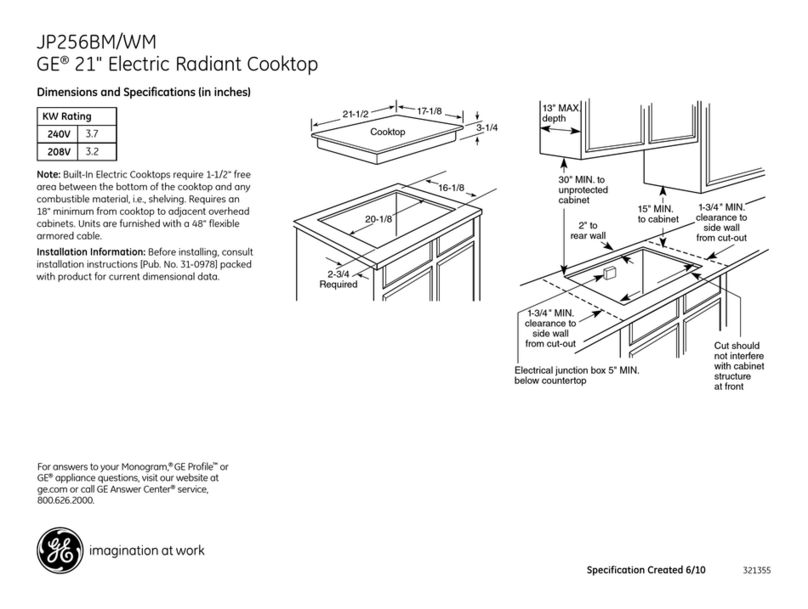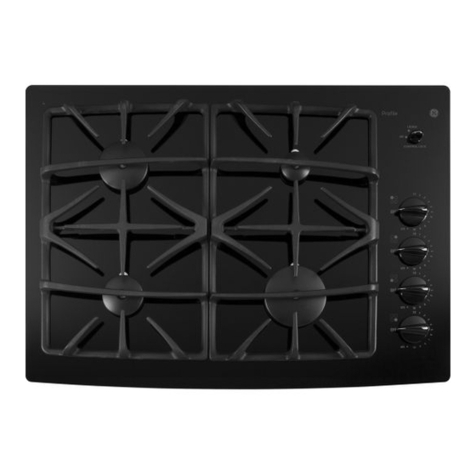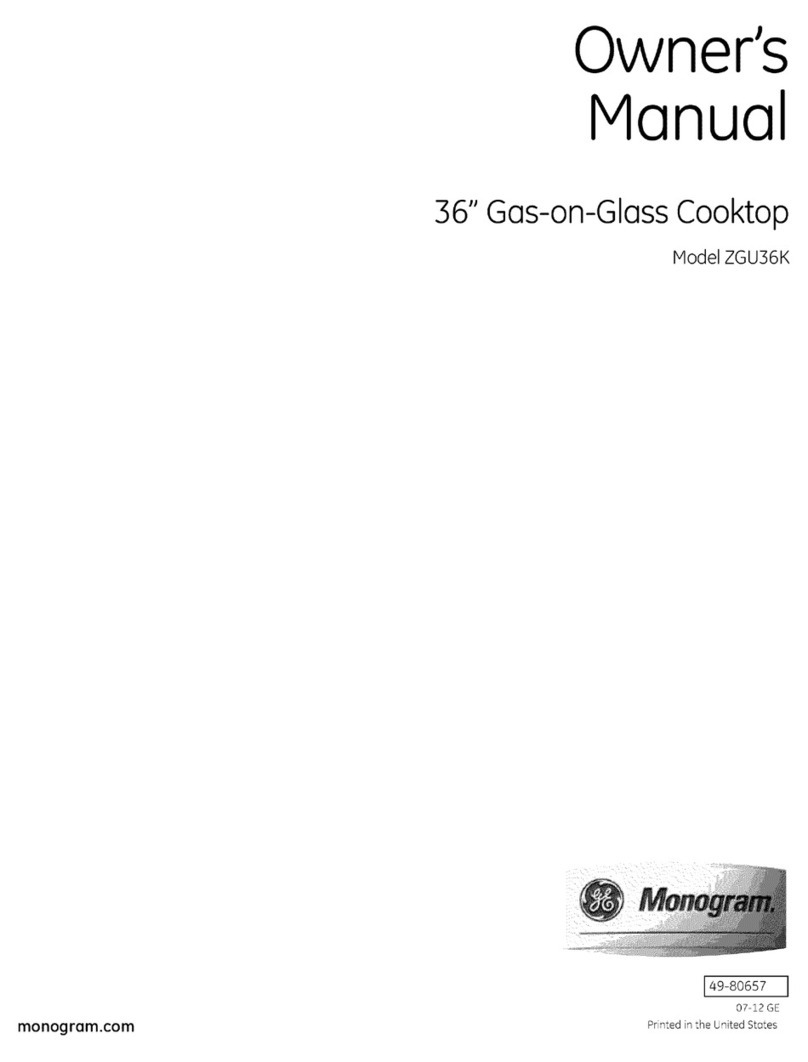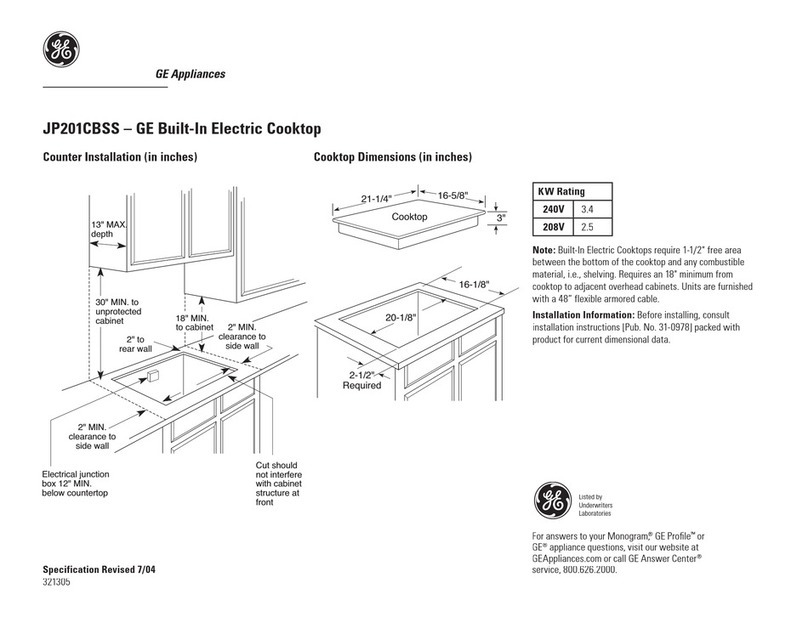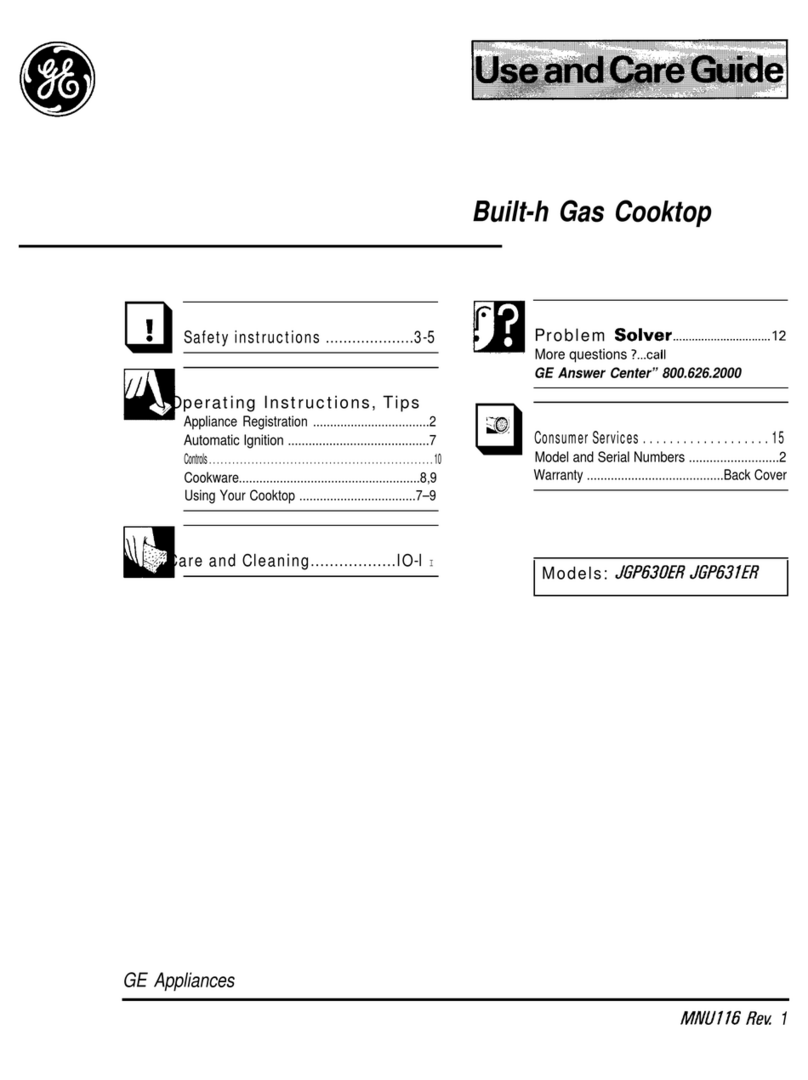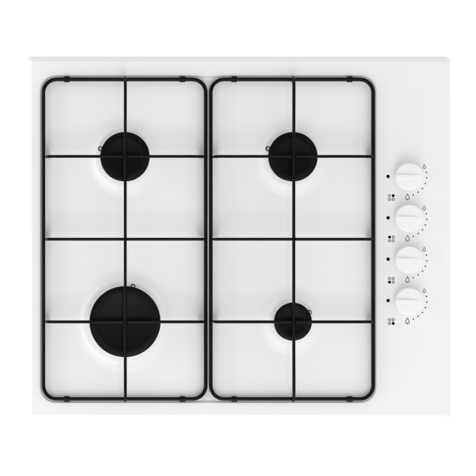
IMPORTANT SAFETY INSTRUCTIONS
Read all instructions before using this appliance.
When using electrical appliances,
basic safety precautions should
be followed, including the
following:
QLTsethis appliance only for its
intended use as described in this
manual.
●Be sure your appliance is
properly installed and grounded
by aqualified technician in
accordance with the provided
installation instructions.
~Don’t attempt to repair
or replace any part of your
cooktop unless it is specifically
recommended in this book. AU
other servicing should be referred
to aqualified technician.
●Before performing any
service, DISCONNECT THE
COOICI’OP POWER SUPPLY
AT THE HOUSEHOLD
DIS’I’RIBUTION PNEL
BY REMOVING THE FUSE
OR SVVITCHLNGOFI? THE
CIRCUIT BREAKER.
●Do not kwe children alone—
children should not be left alone
or unattended in an area where an
appliance is in use. They should
never be allowed to sit or stand
on any part of the appliance.
QDon’t allow anyone to climb,
stand or hang on the cooktop.
●CA~ION: ITEMS OF
INTEREST ‘IX)CHILDREN
SHOULD NH’ BE S’IORED
IN CABINETS ABOVE A
COOICKIP-CHILDREN
CIJMBXNG ON THE
COOKTX)P ‘IX)REACH
ITEMS COULD BE
SERIOUSLY INJURED.
QNever wear ioose-fitting or
hanging garments while using
the appliance. Flammable material
could be ignited if brought in
contact with hot heating elements
and may cause severe bums.
●Use only dry pot holders—
moist or damp pot holders on
hot surfaces may result in bums
from steam. Do not let pot holders
touch hot heating elements. Do
not use atowel or other bulky
cloth in place of apot holder.
●Never use your appliance for
warming or heating the room.
●Do not store flammable
materials near cooking
elements.
●Keep hood and grease filters
clean to maintain good venting
and to avoid grease fires.
●Do not let cooking grease
or other flammable materials
accumulate on the cooktop.
●Do not use water on grease
fires. Never pick up aflaming
pan. Smother flaming pan on
surface unit by covering pan
completely with well-fitting lid,
cookie sheet or flat tray.
Flaming grease outside apan
can be put out by covering with
baking soda or, if available, a
multi-purpose dry chemical
or foam type fire extinguisher.
●Do not cook on abroken glass
cooktop. Spillovers or cleaning
solution may penetrate abroken
coolctop and create arisk of
electrical shock. Contact a
qualified technician immediately
should your cooktop become
broken.
●Do not touch heating elements.
These suri%cesmaybe hot enough
to bum even though they are
dark in color. During and after
use, do not touch, or let clothing
or other flammable materials
contact cooking elements or
areas nearby cooking elements;
first allow sufficient cooling time.
Potentially hot surfaces include
the cooktop and areas facing the
Cooktop. 3
●When cooking pork, follow
the directions exactly and always
cook the meat to an internal
temperature of at least 170°F.
This assures that, in the remote
possibility that trichina may be
present in the meat, it will be
killed and the meat will be safe
to eat.
●Use proper pan size-This
appliance is equipped with one
or more cooking elements of
different size. Select cookware
having flat bottoms large enough
to cover the cooking element.
The use of undersized cookware
will expose aportion of the
cooking element to direct contact
and may result in ignition of
clothing. Proper relationship of
cookware to burner will also
improve efficiency.
sNever leave cooking elements
unattended at high heat settings.
Boilover causes smoking and
greasy spillovers that may catch
on fire.
cDon’t assume that you know
how to operate all parts of the
cooktop. Some features may
work differently from those on
your previous cooktop.
●Clean cooktop with caution.
If awet sponge or cloth is used
to wipe spills on ahot cooking
area, be careful to avoid steam
bum. Some cleansers can
produce noxious fimes if
applied to ahot surface.
●Only certain types of glass,
glass/ceramic, earthenware or
other glazed containers are
suitable for cooktop service;
others may break because of the
sudden change in temperature.
(See “Cookware Tips” on page 7
for suggestions.)
(continued on n.m page)
*
